Preserved Lemon Vinaigrette
This preserved lemon vinaigrette adds a zesty burst of citrus to salads and roasted veggies. The creamy, emulsified texture is sure to bring life to any dish. Plus, it’s ready in no time and keeps for up to a week in the fridge.
Preserved lemon vinaigrette is a zesty and versatile salad dressing that adds a burst of citrus to salads and roasted vegetables. Its tangy flavour and creamy texture will instantly elevate any meal.
The key ingredient in this lemon dressing is preserved lemon. They deliver a unique citrus flavour that makes your salads and veggie side dishes pop.
And the best part? This preserved lemon salad dressing only takes a few minutes to make.
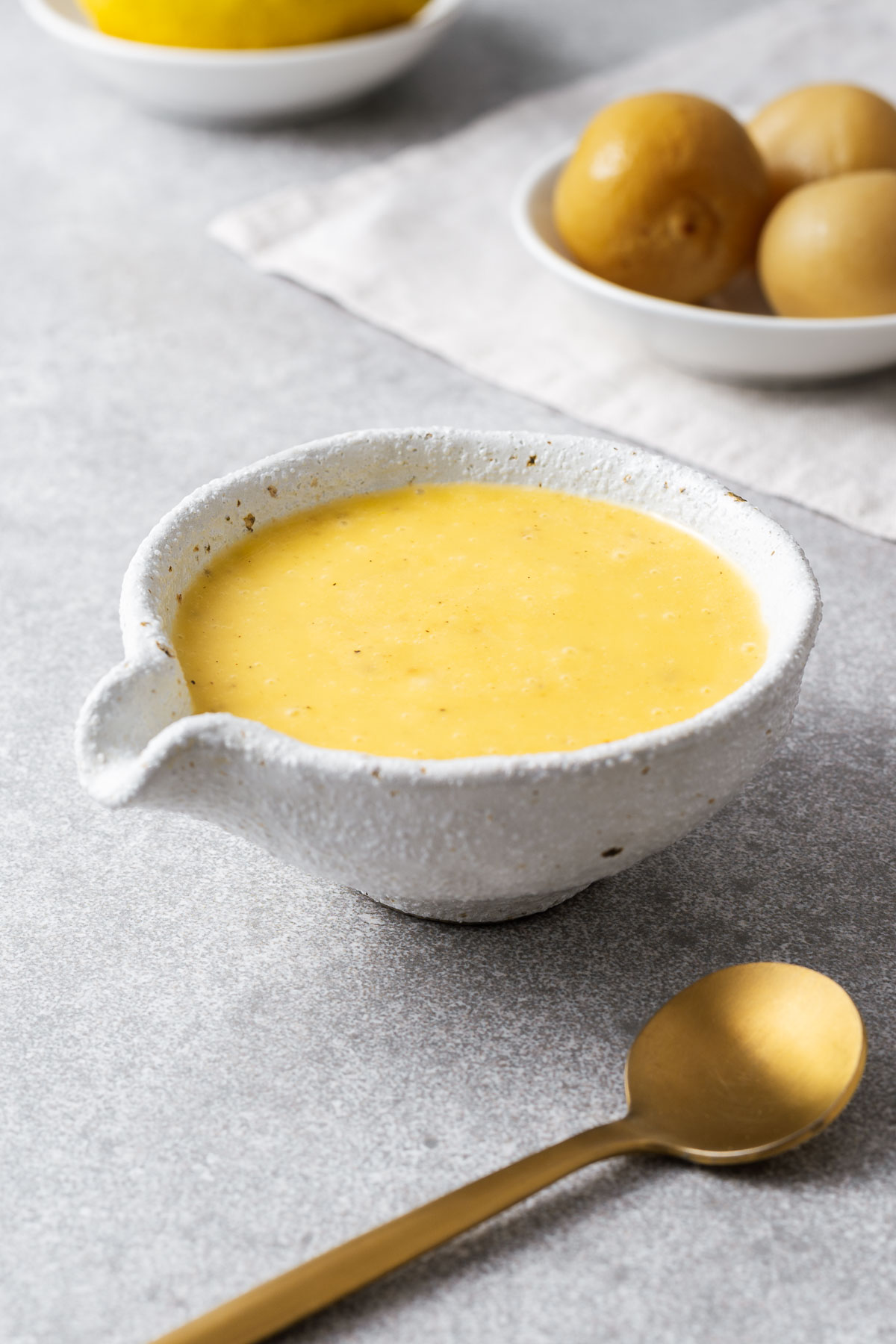
Why you’ll love preserved lemon vinaigrette
Preserved lemons are a staple in Middle Eastern cuisine. And this preserved lemon vinaigrette is the perfect way to use them:
- It’s quick and easy to make: It takes just a few minutes and a handful of ingredients to make this zesty vinaigrette. Simply combine all of the ingredients and blend for an emulsified creamy dressing.
- It’s versatile: The preserved lemon dressing is a great addition to all types of salads, roasted vegetables and grilled fish. It’s also naturally gluten-free, dairy-free and easy to make vegan.
- It’s delicious: The preserved lemon adds a unique and zesty flavour that’s perfect for salad dressings, marinades and sauces. It’s a great way to add a burst of flavour to any recipe.
Ingredients and substitutes
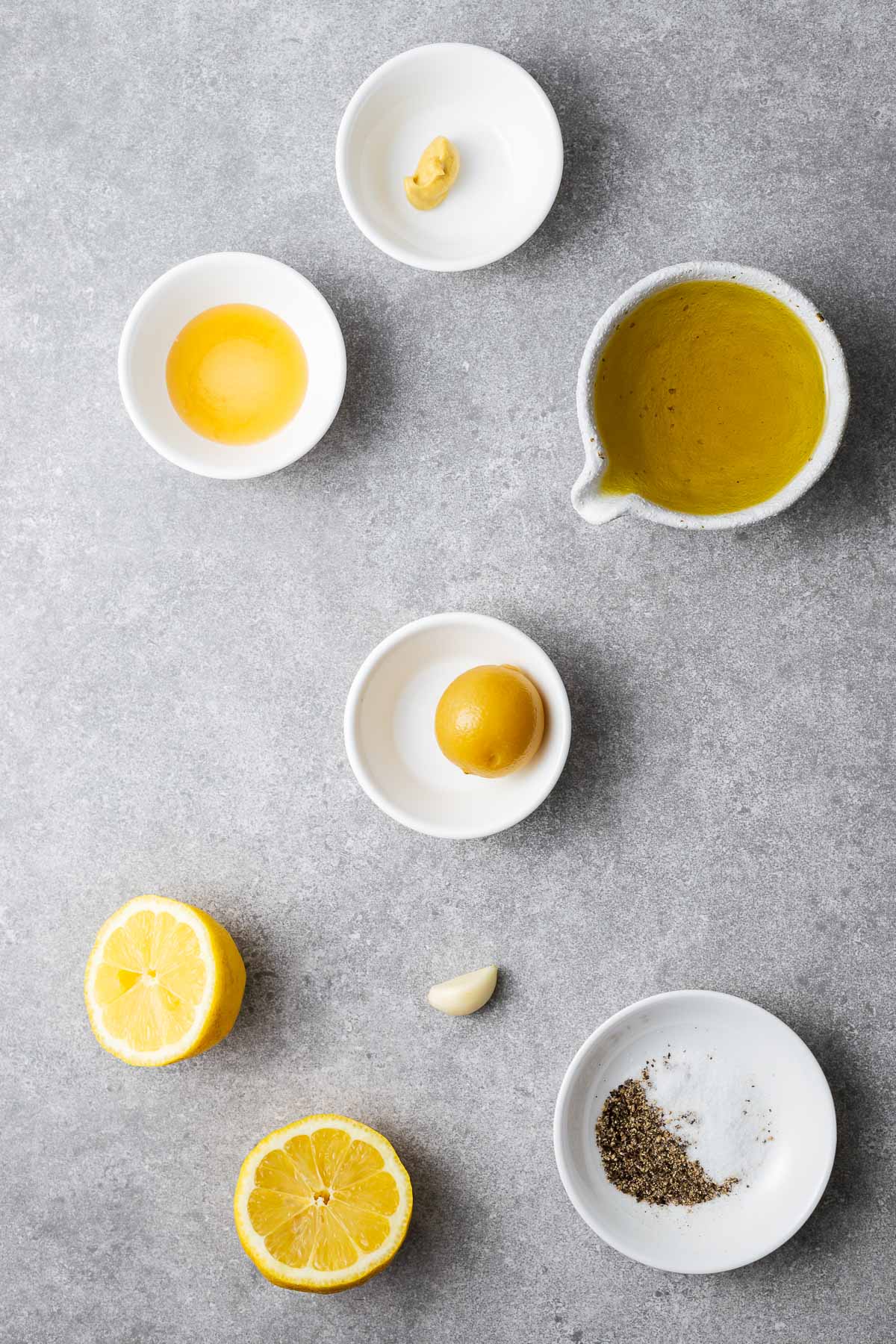
This preserved lemon vinaigrette is refreshing and zesty. And you’ll only need a few ingredients to make this vinaigrette:
- Preserved lemon: I used a small store-bought Beldi preserved lemon weighing about one ounce (30 grams). You can also use homemade preserved lemons – it’s surprisingly easy to make. Or try one of these easy preserved lemon substitutes.
- Lemon juice: A bit of freshly squeezed lemon juice adds a tart edge to the vinaigrette to offset the slight bitterness of the preserved lemon rind. Wine vinegar also works well.
- Garlic: I use one minced garlic clove, but you can substitute it with garlic powder if you prefer.
- Honey: I use honey to add a touch of sweetness to the vinaigrette. You can also use maple syrup, brown rice syrup or agave syrup for a plant-based alternative.
- Dijon mustard: Dijon mustard adds a bit of pungency and helps emulsify the vinaigrette. You can also try a Dijon mustard substitute if you’ve run out.
- Extra virgin olive oil: I use extra virgin olive oil – I love the pungent flavour with the citrus. But you can also use avocado oil, vegetable oil or sunflower oil if you prefer a milder flavour.
- Salt and black pepper: I use sea salt and fresh ground pepper in this recipe. But you can use kosher salt too.
Related Posts:
- Try this preserved lemon recipe if you’re interested in making your own.
- And if you don’t have the time to wait for the lemons to cure, try this preserved lemon substitute recipe.
- I also suggest Dijon mustard substitutes if you don’t have any.
How to make preserved lemon vinaigrette
The unique flavours of preserved lemon vinaigrette will make your taste buds sing. And it only takes minutes to make.
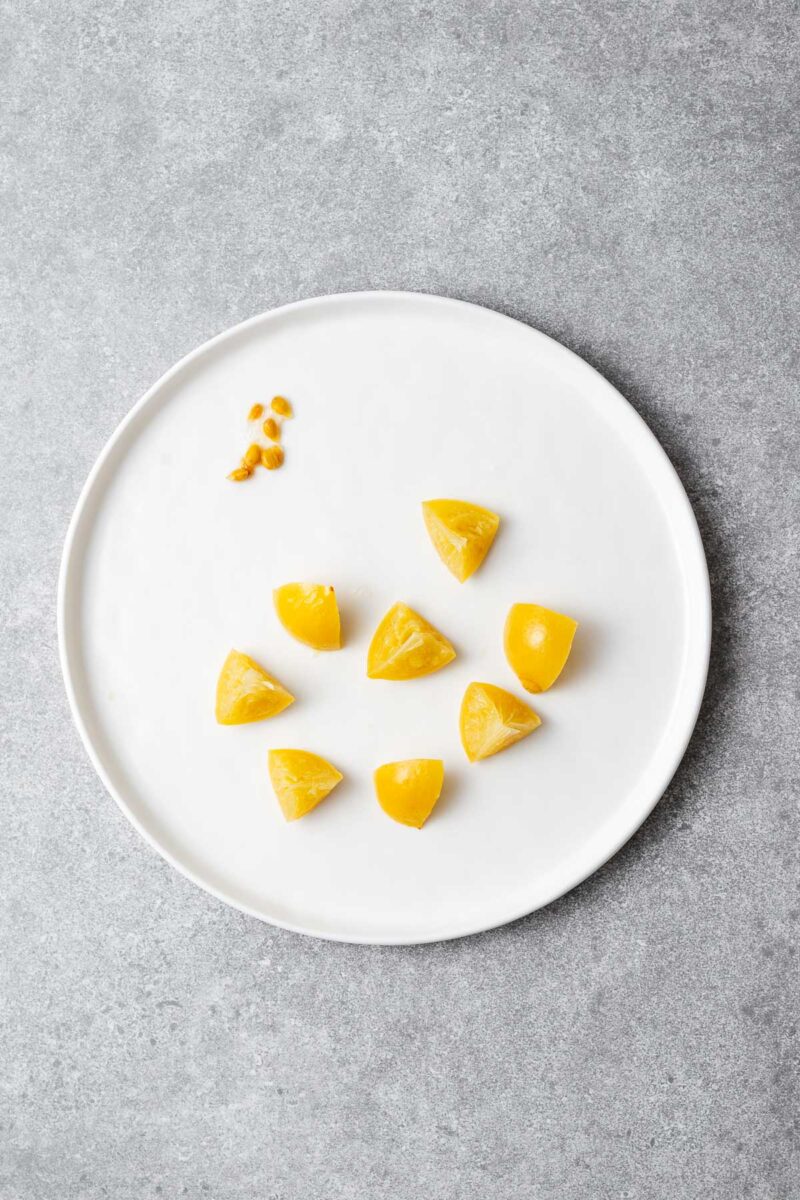
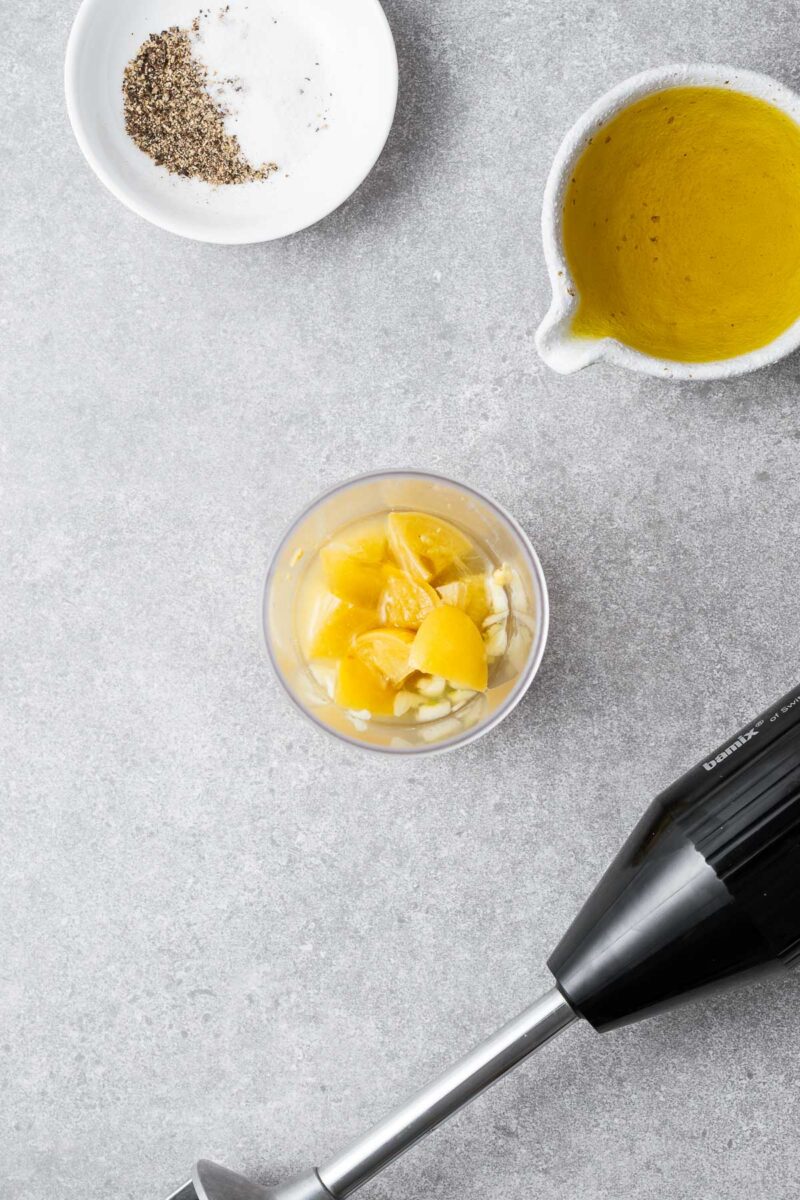
Step 1: Rinse the preserved lemon under running water to remove excess salt. Then roughly chop into small pieces, removing any seeds.
Step 2: Place the chopped preserved lemon (seeds removed), fresh lemon juice, minced garlic, honey, and Dijon mustard in a stick blender jug, high-speed blender, or small food processor.
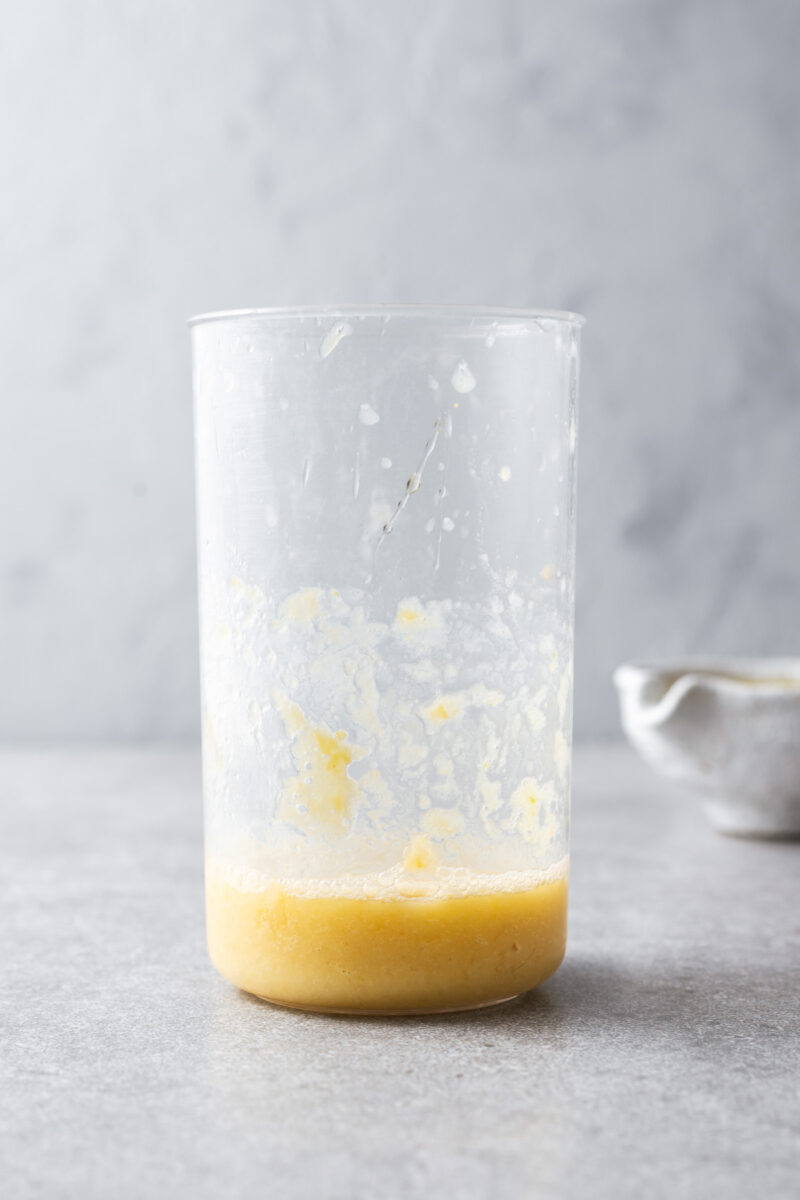
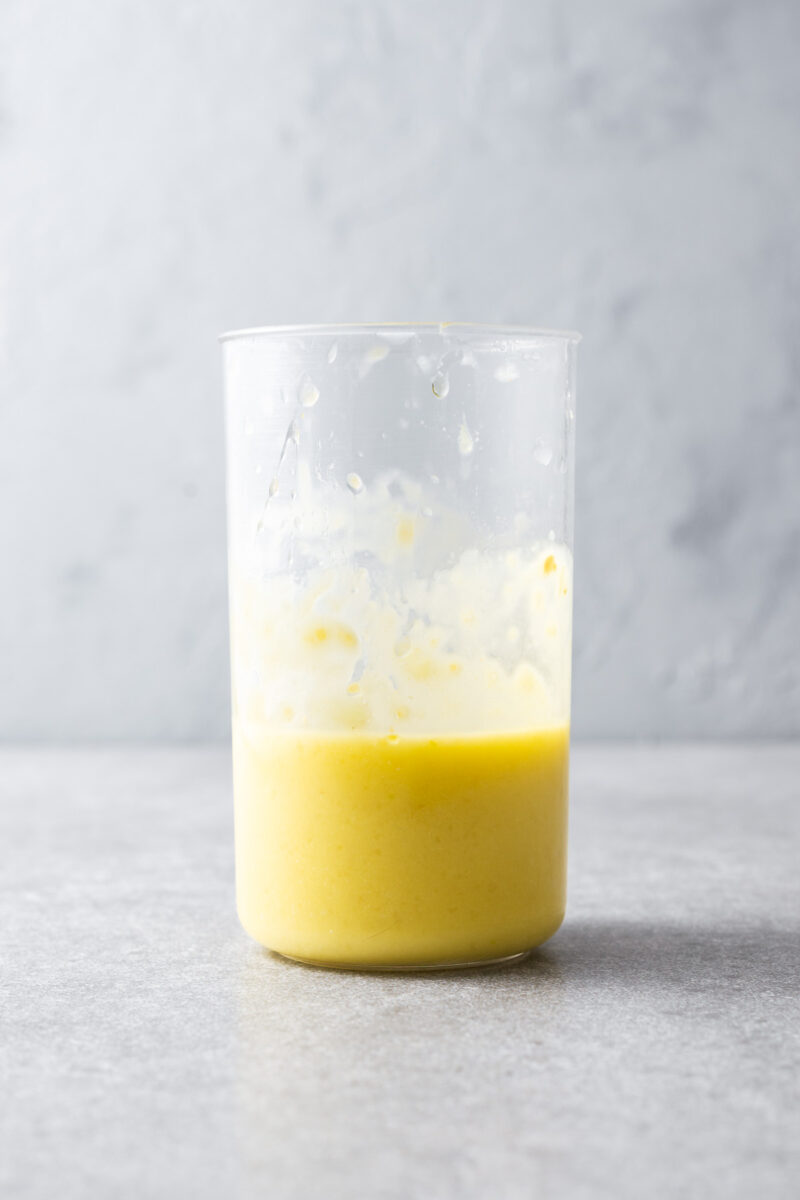
Step 3: Blend until the mixture is smooth and the preserved lemon is well incorporated.
Step 4: Slowly drizzle in the extra virgin olive oil with the blender or food processor still running. Continue blending until the vinaigrette is well emulsified and the texture is creamy.
Taste the vinaigrette and season with salt and freshly ground black pepper according to your preference. I add a quarter teaspoon of each.
If the vinaigrette is too thick, add a bit of water, one tablespoon at a time, until it reaches your desired thickness.
Storage: Transfer the preserved lemon vinaigrette to a glass airtight container, tightly close the lid and store it in the refrigerator for up to a week.
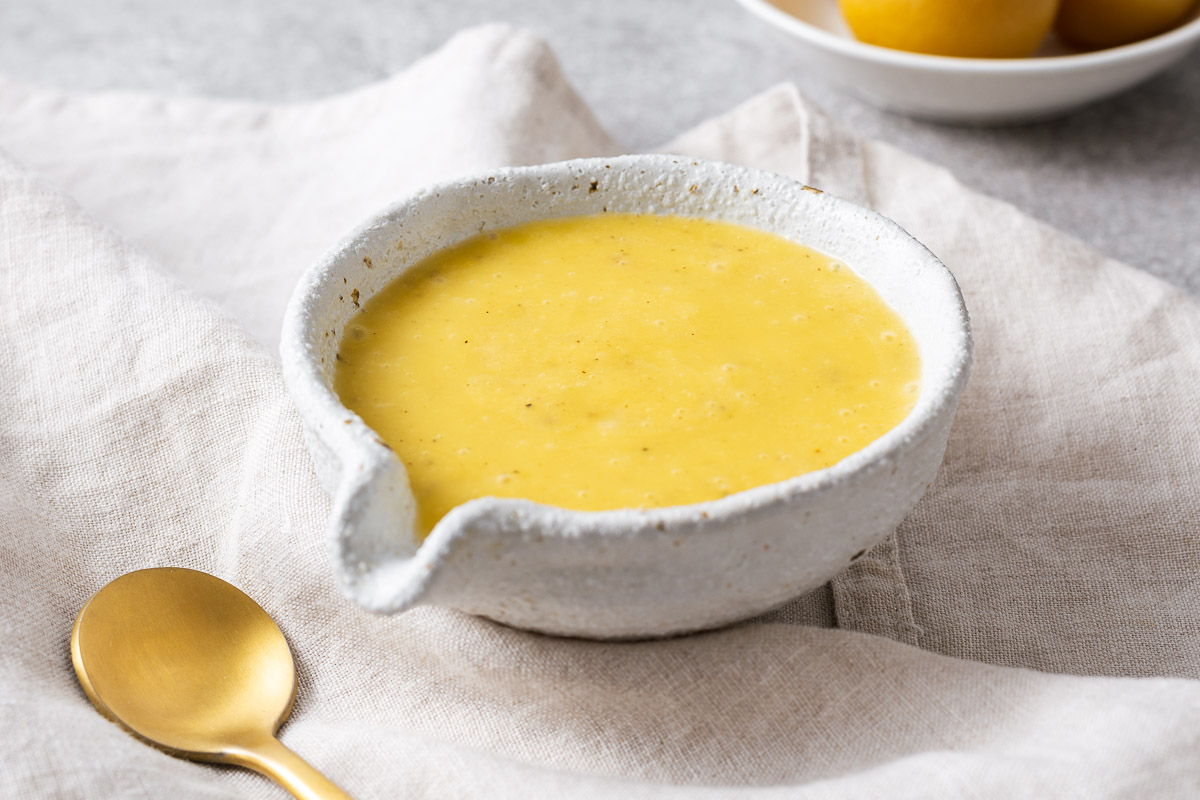
Preserved lemon vinaigrette serving suggestions
This zesty preserved lemon vinaigrette is a great way to add a burst of citrus to salads, roasted vegetables, and grain bowls.
Add a spoonful of this preserved lemon vinaigrette to bitter salads like spinach or arugula salad for a burst of lemony flavour. Or try it in this kale salad with toasted hazelnuts.
Toss cooked and cooled pasta with the vinaigrette for a light and zesty pasta salad. Add thinly sliced vegetables and finely chopped herbs for a refreshing light lunch.
Drizzle the vinaigrette over roasted vegetables like sweet potatoes, carrots, Brussels sprouts, or broccoli. Try it with charred broccolini for an easy veggie side.
Mix a spoonful of the vinaigrette into a potato salad with a few tablespoons of chopped fresh herbs for a bright and creamy herbed potato salad.
Frequently asked questions
Preserved lemons are a traditional Moroccan condiment and are used to add a tangy, citrusy flavour to dishes. They are often used to season stews, tagines and salads, as well as dressings, sauces, and marinades.
Pickled lemons are similar to preserved lemons, but the two terms are not interchangeable. Pickled lemons are usually made with vinegar while preserved lemons are made with salt and lemon juice.
While fresh and preserved lemons both provide a tangy citrus flavour to dishes, the fermentation process used for preserved lemons adds a distinctive flavour. It is also a means to preserve lemons for a longer time.
Yes, the skin of preserved lemons is used in cooking. The preserved lemon rind is the part of the lemon that is most flavourful and can be used to add a subtle salty, tangy flavour to dishes.
Rinsing preserved lemons before use removes the excess salt and lemon juice. This makes it easier to avoid over seasoning and allows the flavour of the preserved lemon to shine through in your dish.

Ingredients
- 1 ounce preserved lemon, one small preserved lemon
- 2 tablespoons fresh lemon juice
- 1 clove garlic , minced
- 2 teaspoons honey
- ½ teaspoon Dijon mustard
- ⅓ cup extra virgin olive oil
- Salt and freshly ground black pepper , to taste
Instructions
- Rinse the preserved lemon under running water to remove excess salt. Then roughly chop, removing any seeds.
- Using a stick blender, a high-speed blender or a small food processor, combine the preserved lemon pieces, fresh lemon juice, minced garlic, honey, and Dijon mustard. Blend until the mixture is smooth and the preserved lemon is well incorporated.
- With the blender or food processor running, slowly stream in the extra virgin olive oil. Continue blending until the vinaigrette is well emulsified and the texture is creamy.
- Taste the vinaigrette and season with salt and freshly ground black pepper according to your preference. I add roughly ¼ teaspoon of each.
- If the vinaigrette is too thick, you can adjust the consistency by adding a bit of water, one tablespoon at a time, until it reaches your desired thickness.
- Transfer the preserved lemon vinaigrette to a glass container or jar with a tight-fitting lid. Store it in the refrigerator for up to a week.
Notes
- I used a small Beldi preserved lemon (weighing about 1 ounce / 30 grams), but you can also use homemade preserved lemons.
- If you don’t have a stick blender or small food processor, you can finely mince the preserved lemon. Then place all of the ingredients in a mason jar and screw the lid on tightly, and shake vigorously until the vinaigrette is well combined.
